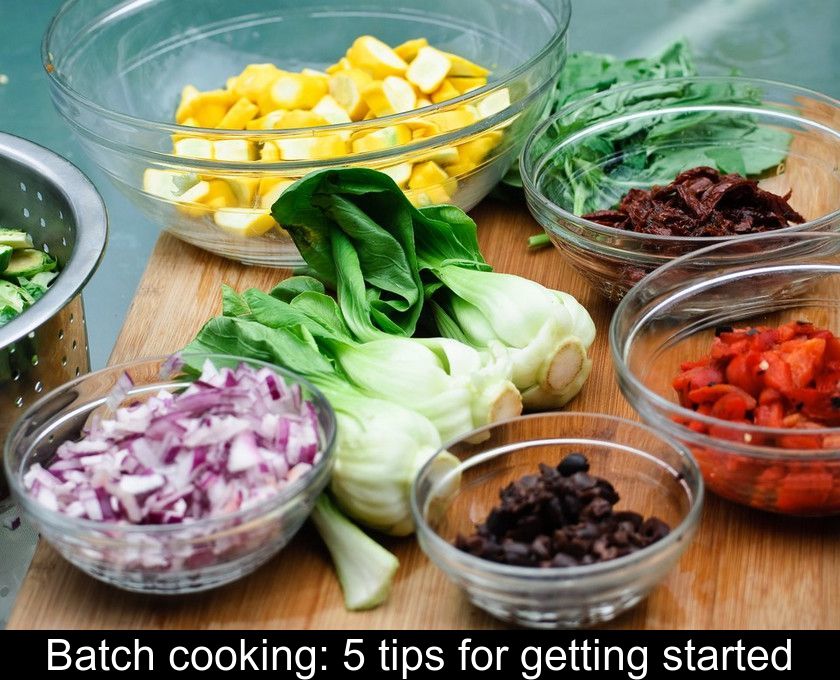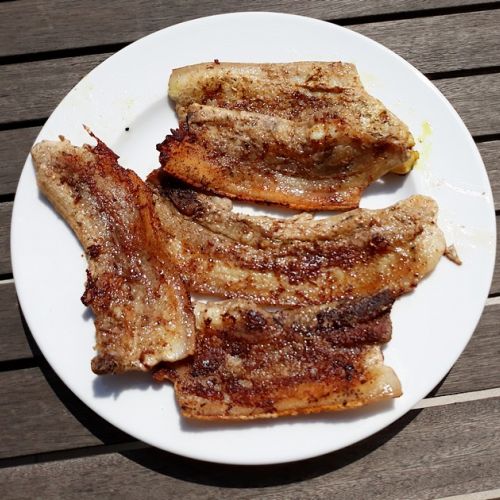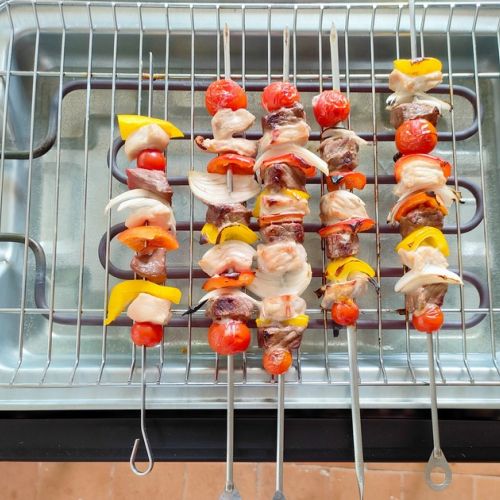Batch Cooking: 5 Tips For Getting Started
Have you heard of batch cooking? This very popular method consists of cooking on Sundays so that you don't have to do it during the week. If you've been seduced by this new culinary trend but don't know how to get started, here are 5 tips for getting started.
1- Plan the week's menus
Planning is the key to batch cooking as this method involves cooking for about 2 hours on Sundays all the meals for the week.
To achieve this, of course, you need to know in advance what you're going to cook and shop accordingly, preferably on Saturday.
Some books dedicated to this method give you pre-made menus and the shopping list that goes with it.
But since the menus offered in Batch cooking books may not suit the tastes of the whole family, the easiest way is to choose dishes that everyone likes and that you are already used to cooking.
To make life easier, try to plan dishes that have common ingredients on the same week.
2- Plan smart
The great advantage of batch cooking is that it saves time and you no longer have to ask yourself the age-old question: what's for dinner?
When mastered well, this method also has the advantage of using leftovers intelligently to avoid food waste and prepare varied menus more quickly.
So in step number 1 of your weekly planning, you should plan to cook:
- at least one starchy food (like pasta or rice) that you can eat once hot and once cold as a salad
- at least 2 kinds of vegetables (like carrots and spinach) that you can use in gratins or quiches.
With this method, don't hesitate to cook large proportions of vegetables and starches to use in different recipes.
Use them sometimes as side dishes and sometimes as the base of a mixed salad. Also remember to alternate ingredients on different days of the week so you don't get bored.
To note: don't make the mistake of trying to cook EVERYTHING on Sunday. That would take up too much of your time. Instead, use your Sunday cooking session to plan cooked vegetables and starches that you will keep raw and can assemble during the week into salads or casseroles.
3- Getting organized in the kitchen
When it comes to cooking, organization is again the key to a successful batch cooking session.
To successfully cook as many dishes as possible in as little time as possible, you should always start with the most tedious step: preparing the vegetables.
If you peel and chop all the vegetables and reserve them in different bowls, you'll save time because you won't have to come back to them.
Start with the cleanest vegetables, such as tomatoes, and finish with the earthiest ones, such as potatoes or carrots.
You can then move on to assembling the different dishes such as quiches or lasagne or gratins and finally to cooking.
Always start with the longest cooking times. When it comes to baking, feel free to put two dishes in the oven at the same time.
Not only is it faster, but it's also more economical since you're heating the oven only once to cook two dishes.
If you need to bake more than two dishes in the oven, chain the bakes to take advantage of the residual heat: another time and electricity (or gas) saving trick.
While the first two dishes are cooking, move on to the dishwashing stage. This will save you from having a mountain of them at the end of your batch cooking session.
You can also take advantage of the cooking time to make sauces, marinades, dressings or even to blend soup or puree.
4- Provide storage containers
Batch cooking doesn't necessarily require a lot of equipment, but you should at least provide containers to store your preparations.
If you don't have enough airtight cans to store the dishes and ingredients you made on Sunday, consider using glass pickle jars and large jam jars.
These salvageable containers are more environmentally friendly and healthier than the famous plastic Tupperware.
For a better preservation, plan to eat the dishes containing meat or fish first during the week or think of freezing them to be able to eat them at the end of the week.
To note: always let food cool before storing it in your fridge or freezer. This is a bit of a time consuming step, but essential so as not to break the cold chain of food already in your freezer or fridge.
5- Find inspiration on the Internet
One last piece of advice for those who are new to batch cooking: rather than buying a book whose recipes you won't like, you can get your inspiration from the web.
Indeed, as this method is very popular at the moment, you will find many food blogs, websites and Instagram accounts offering Batch booking menus adapted according to the seasons. For example, you can find ideas on the site below.






